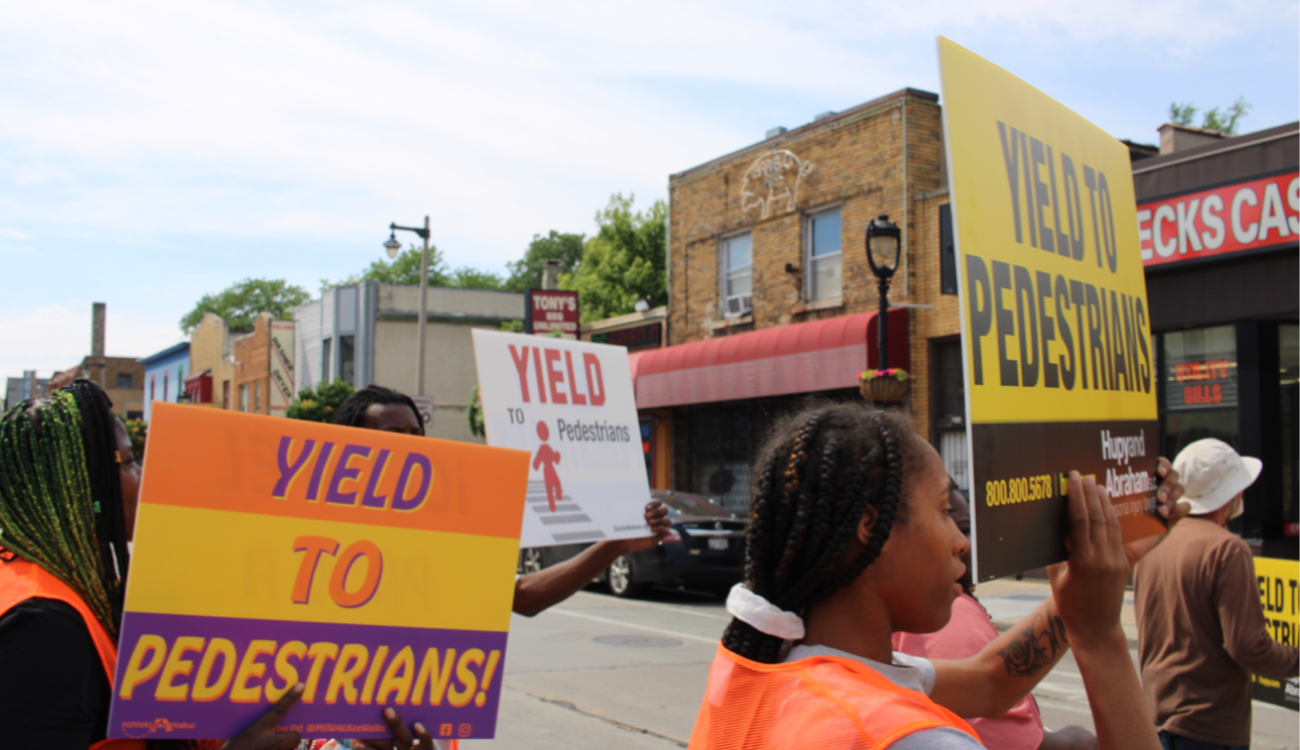
Learning from Milwaukee’s Record-High Pedestrian Fatalities
In 2022, 23 pedestrians were killed in Milwaukee, and 56 pedestrians were seriously injured. This is high of pedestrian fatalities since at least 2010. It is disheartening to see fatalities rise. We know we can achieve fewer fatalities, because we already have in previous years. Yet this is not a problem unique to Milwaukee.
In this post, we’ll talk about Milwaukee’s specific statistics, as well as some patterns we noticed in crash reports. However, we know that many of the reasons why pedestrian crashes happen are relevant to other parts of Wisconsin. We hope that these insights can be useful to pedestrian advocates across the state. If you’re looking for additional resources, check out:
- Pedestrian law card (English)
- Milwaukee Streetwise Toolkit (English/Spanish) – the content is not specific to Milwaukee!
- Community Maps (Learn more here)
- Your county should have an associated Traffic Safety Commission. Reaching out to them or researching their data may be helpful.
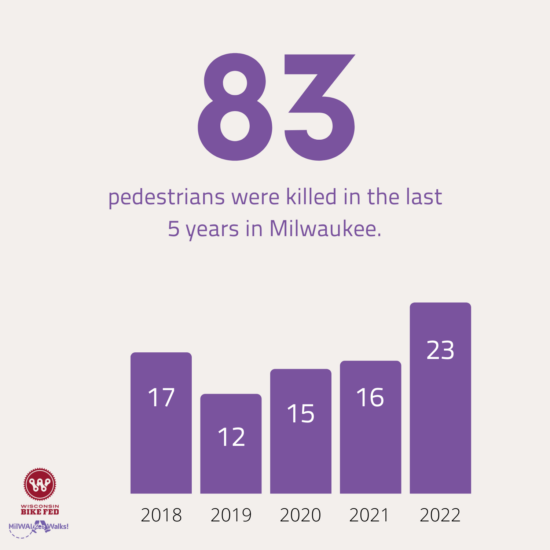
Who bears the burden of traffic violence?
To understand these crashes, we read every crash report for fatal & serious injury crashes involving pedestrians in Milwaukee in 2022. While we will talk about some of the trends we noticed in the reports, we acknowledge that behind these numbers and reports a person who has been ripped away from our community or whose life has been dramatically changed through preventable injury.
Black Milwaukeeans are disproportionately represented among pedestrian fatalities. Though they make up only 39.4% of the city’s population, Black Milwaukeeans have been 59% of the pedestrians killed in the city in the past 5 years. They are the only racial group to be over-represented in pedestrian fatalities.
In part, this likely reflects Milwaukee’s racial segregation and the associated historic disinvestment in Black neighborhoods. Some of the worst-designed roads in the city are located in primarily Black neighborhoods. These include roads like Capitol and Fond Du Lac.
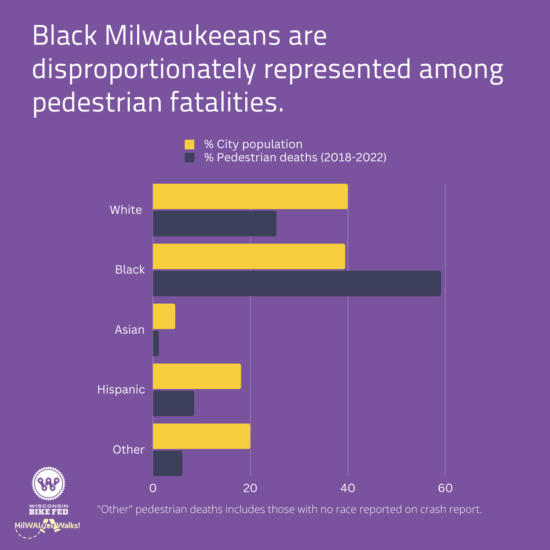
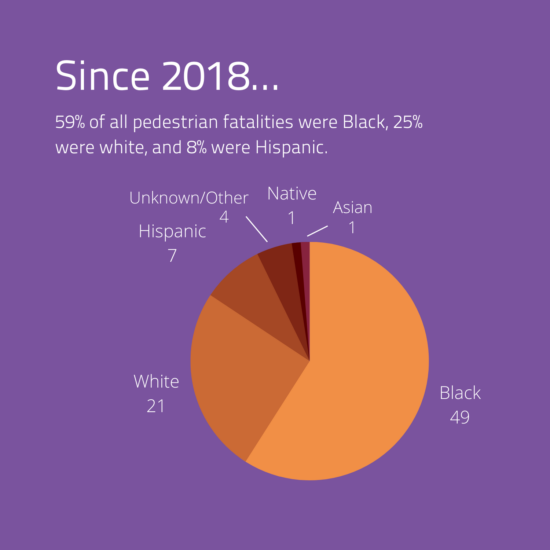
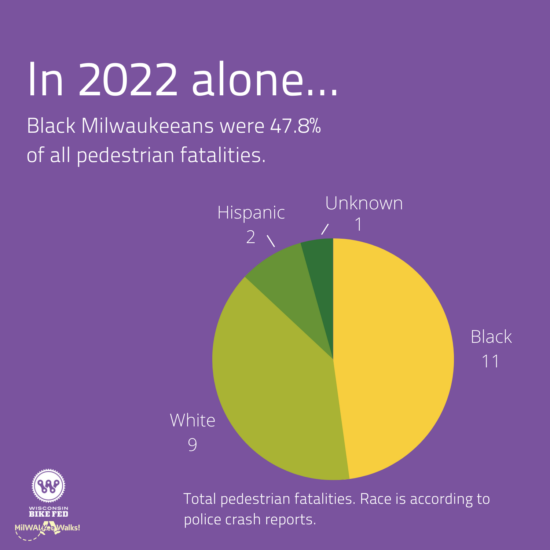
Additionally, a study from UW-Milwaukee that analyzed pedestrian crashes from 2011 to 2015 indicated that this is not only about intra-neighborhood crashes caused by the disparities in road design. Instead, the study shows that there are demographic differences between the pedestrians who are hit and the drivers who hit them.
One of the study authors, Tony Giron, noted that: “…on average, drivers who hit pedestrians were older, of higher income, higher automobile ownership, more white residents and fewer Black residents.”
Concerning trends in crash reporting
Crash reports include a lot of information, such as: statements from relevant parties such drivers, victims, and potentially witnesses; notes about camera footage analyzed after a crash; demographics like race and sex; make and model of vehicles; a sketch of the road and what occurred; the number of travel lanes; the speed limit; if citations were given.
We noticed a few worrying claims from drivers in these reports, such as:
- Sun made it difficult to see pedestrian as driver turned
- Pedestrian “ran into street out of nowhere”
- Pedestrian did not have a walk signal
- There was no crosswalk
In many reports, the only provided substantiation of these claims came from the driver’s statement to police.
Let’s break down some concerns around these claims, including:
- A person who has been killed can’t provide their side of a story.
- Crashes are physically and emotionally traumatic. It is very common to not remember what happened before a crash. This is true for victims, drivers, and even witnesses.
- Higher speeds means that drivers are less likely to see pedestrians.
- The built environment impacts the behavior of both drivers and pedestrians.
- There is often poor education about pedestrian rights.
To dive into some of these concerns, let’s discuss two aspects of a crash: speeding and right of way.
Speeding
At higher speeds, we see less of the world around us. The image below shows how a driver might believe that someone came out of “nowhere.” Of course, this statement doesn’t make sense: someone always appears from somewhere. However, if a driver is driving too fast, they will not see someone. As they say, the hardest part of driving is always being prepared to stop.
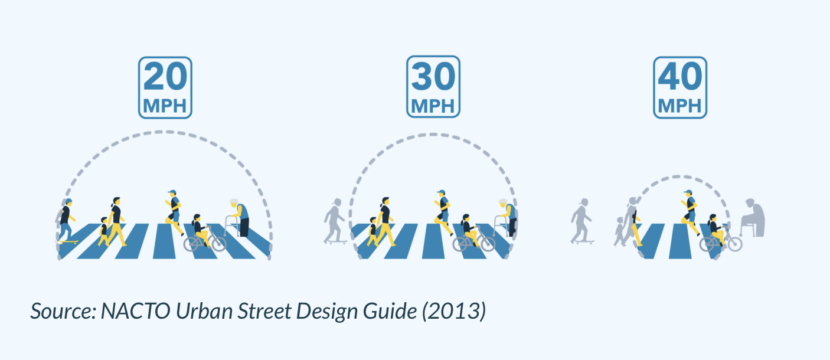
Higher speeds not only makes it more likely for drivers to hit someone, but it also makes it less likely for someone to survive the crash with their life or with only minor injuries.
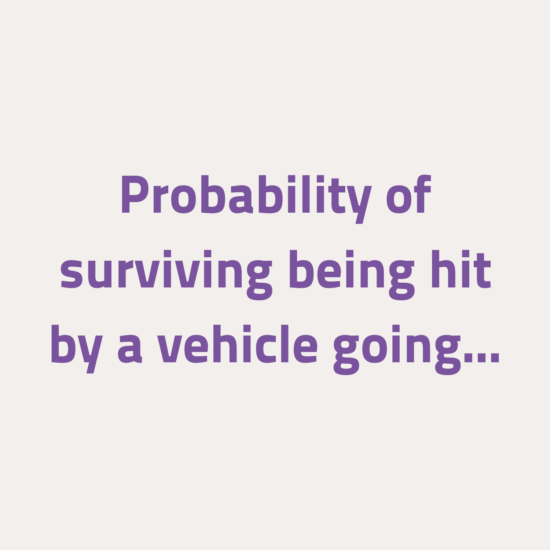
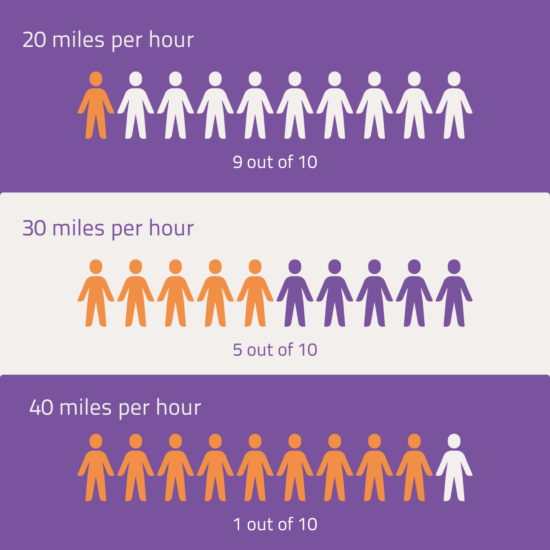
Speeding was mostly only mentioned in crash reports in cases of egregious scenarios, such as a driver driving away from police. It is very likely that excessive speeds for conditions (such as lighting and weather) was a factor in many other crashes and their severity.
Crosswalks and right of way
In Wisconsin, pedestrians have the right of way both at signalized intersections when they have a walk or green signal, and at both marked and unmarked crosswalks.
It is important to understand what a crosswalk is. Crosswalks don’t require a signal, a sign, or paint, although these are often included at high-volume or more dangerous crossings. Essentially, if there is a natural crossing between sidewalks, or in the case of no sidewalks, between roads, that is a crosswalk, and pedestrians have right of way. We have included some images of Milwaukee streets with various kinds of crosswalks.
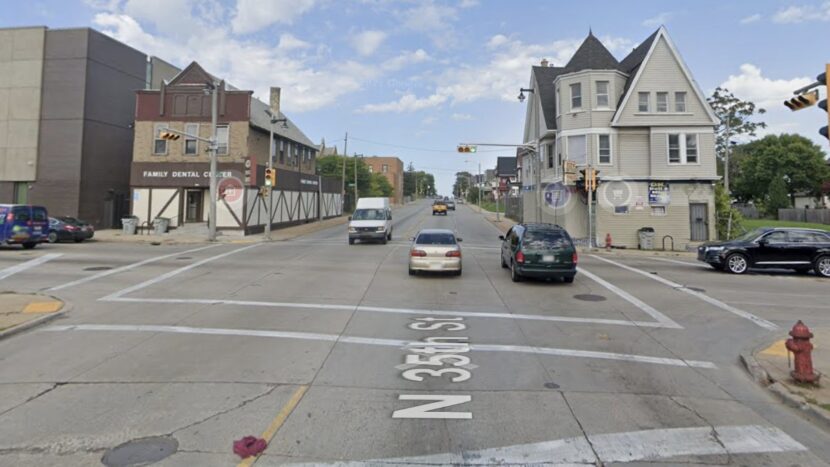
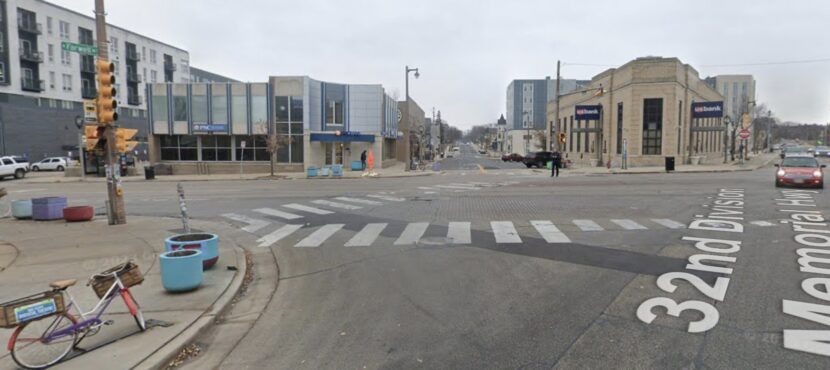
Numerous reports listed that pedestrians were not in crosswalks. We think it’s important to add context to those claims. For every crash, we looked at Google Maps imagery of the crash location. Imagery won’t necessary represent exactly what the road looked like during the crash, as lighting and road design may have been different since an image was taken. However, most victims had indeed been near a crosswalk. Reporters or drivers may not have known this, either because the crosswalk was unmarked or had worn paint, or because the victim may have been moved by the force of the car, which can make it look like they were crossing outside a crosswalk.
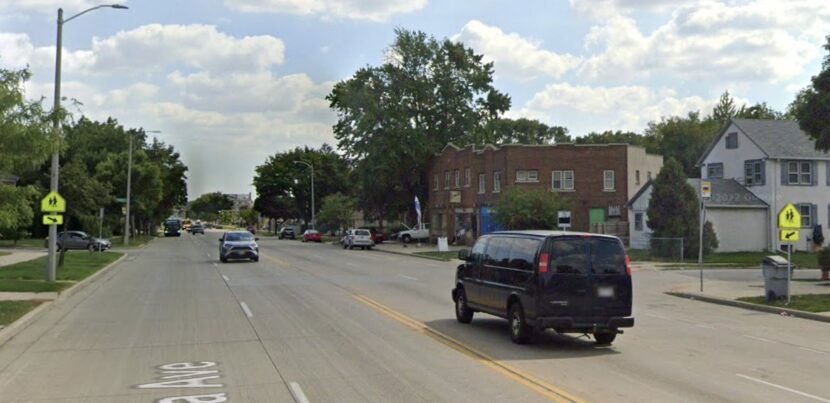
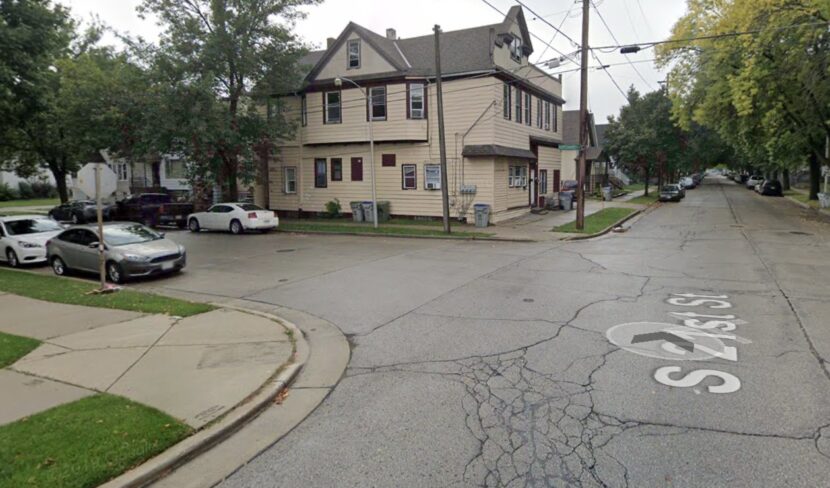
Unfortunately, several reports included claims that victims had improperly “jaywalked.” Crossing outside of a crosswalk is not a crime or illegal in Wisconsin, nor does the term “jaywalk” appear anywhere in Wisconsin’s statutes. “Jaywalker” is a term created by the auto industry in the early 20th century to make it seem as though people walking were at fault for being hit by drivers. In Wisconsin, it is legal to cross the road outside of a crosswalk, but pedestrians must yield to vehicles when doing so. For example, it is very common to cross mid-block when parking a car and crossing to a business on the other side.
Regardless of right of way, drivers still need to drive the appropriate speed for the conditions and be prepared to stop if needed. While all road users need to pay attention to their surroundings, drivers must take additional responsibility as they are driving a vehicle that could harm a person. Having the legal right of way does not give one the right to drive above the speed limit, drive without headlights on, text, or hit someone.
Data and Resources
We gathered this data through use of Community Maps, an excellent resource run by WisDOT and TOPS. The general public can view basic information about crashes. More advanced searching is limited to those with advanced access due to the sensitive nature of the reports. There might be slight differences from official reports later, due to delays in reporting.
If you are in the City of Milwaukee, our MilWALKee Walks program is always looking to connect with folks passionate about pedestrian rights and safety. Sign up to volunteer with us via our sign up form, or contact Marybeth McGinnis (marybeth@wisconsinbikefed.org). If you aren’t in Milwaukee, we would still love to hear from you!